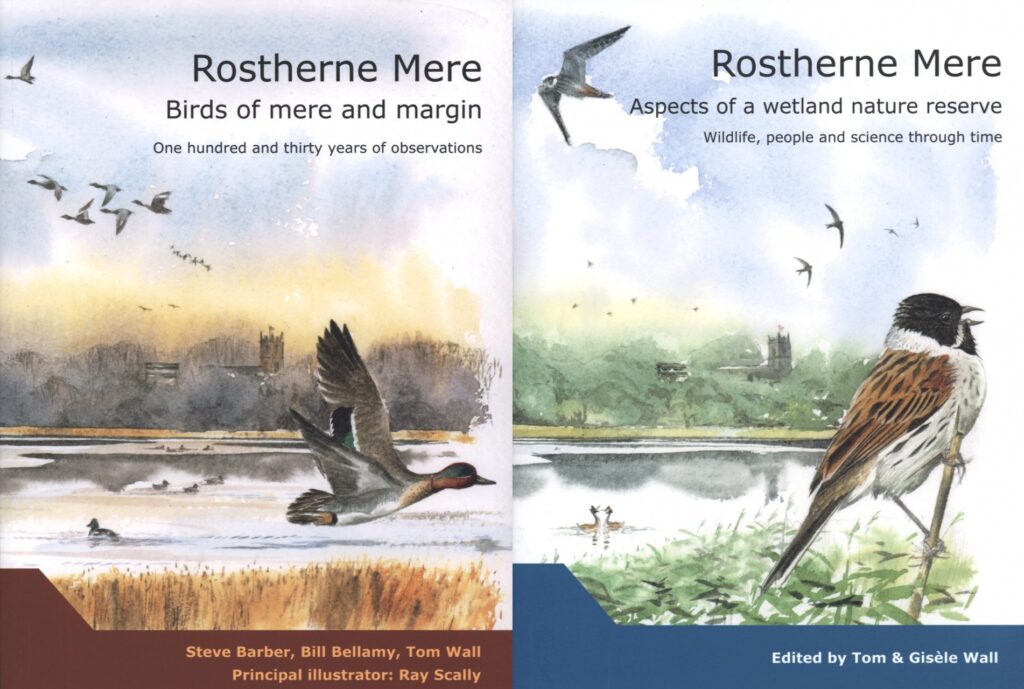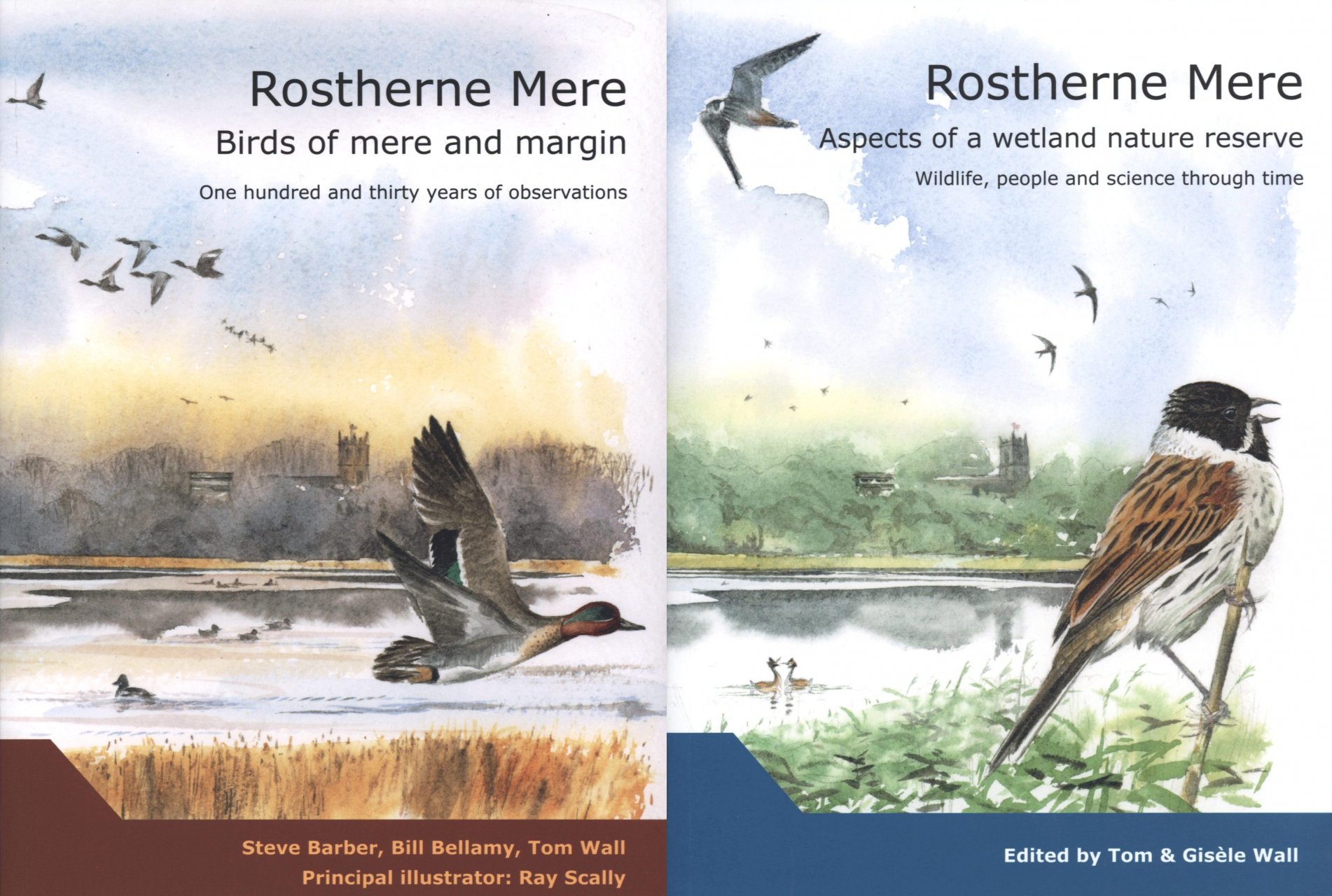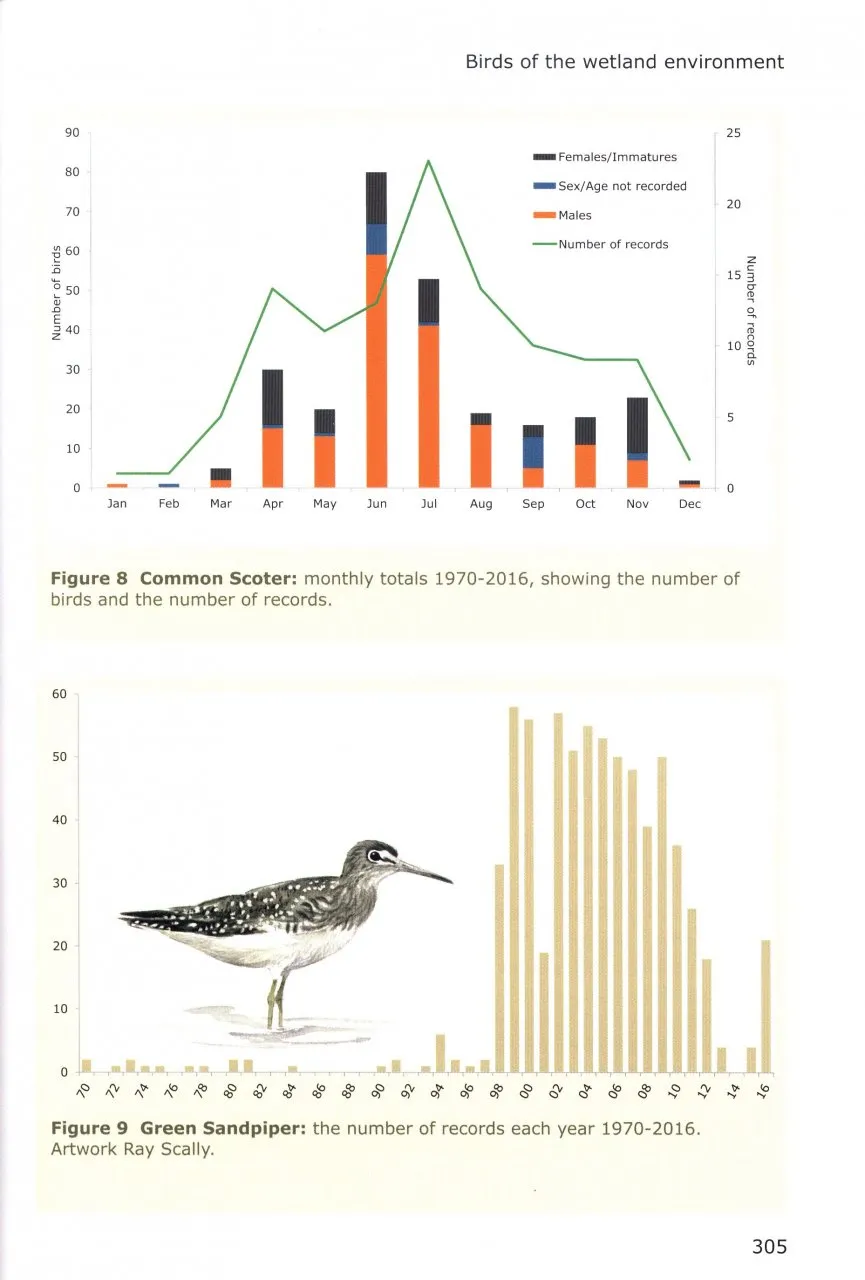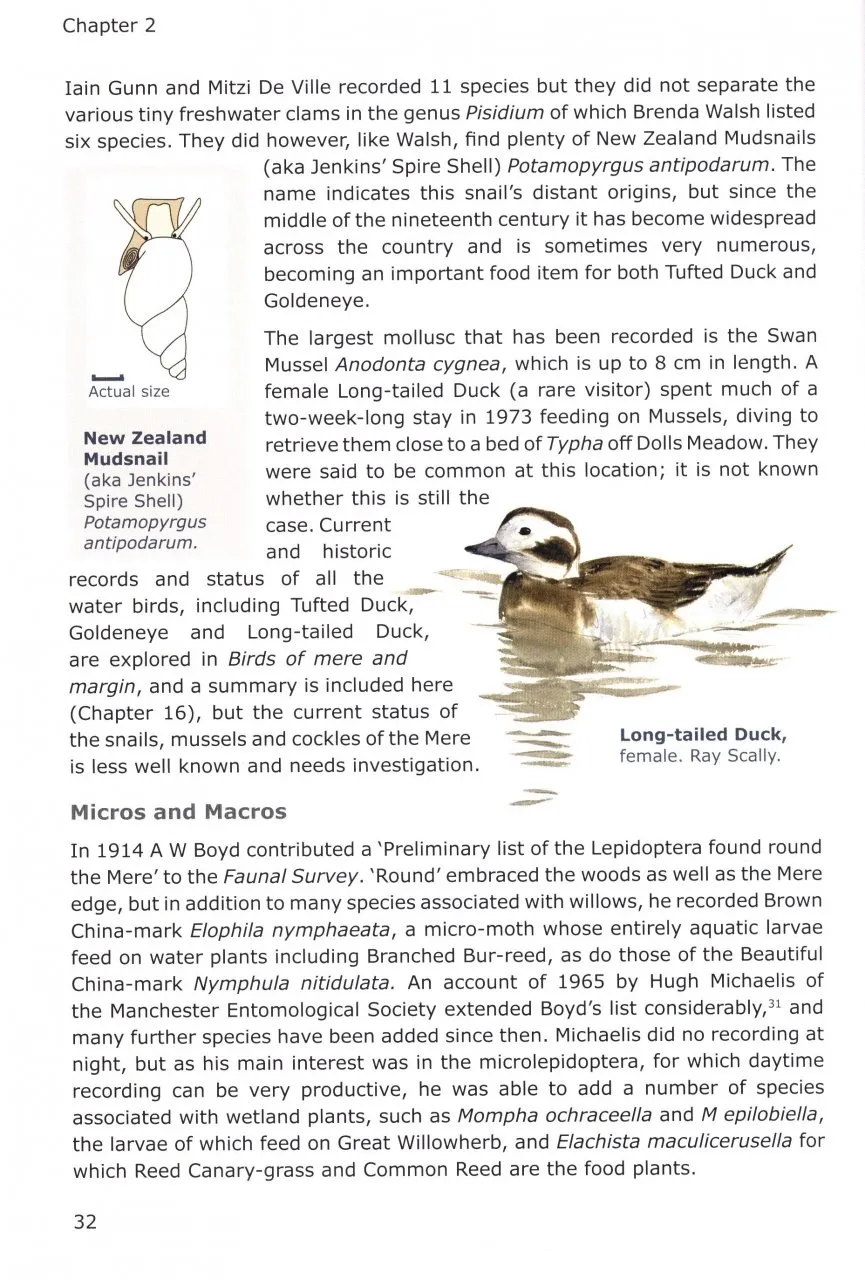Those who remember Tom Wall’s book The Singular Stiperstones (2014) will know what to expect in this account of another famous place, Rostherne Mere. Like its predecessor, it is a lovingly detailed and very well-illustrated story of the human and natural history of one small corner of England; in his words, of the people who have ‘trespassed, fished, skated, painted, protested, parachuted, worked, researched and birdwatched’ in and around its quiet waters. Rostherne Mere, in Cheshire, is the largest, deepest and most northerly of Cheshire’s meres (natural lakes formed in the hollows left by the Ice Age). It is also one of the most thoroughly researched lakes in Britain, and probably the world. Sixteen PhD theses have been based on it, while its ecology has been studied by such ecological luminaries as W. H. Pearsall, Noel Hynes, Colin Reynolds and Brian Moss. Its nesting, roosting and wintering birds have been monitored for more than a century, notably by those revered Cheshire naturalists T. A. Coward and Arnold Boyd. It was for long a private nature reserve owned by Lord Egerton of Tatton Hall before being gifted to the Nature Conservancy as a National Nature Reserve in 1961.
View this book on the NHBS website
Rostherne Mere is a beautiful place, rich in wildlife, but it has suffered. For a long time its deteriorating water quality was blamed on the birds (‘guanotrophy’) but it had far more to do with the inflow of sewage and farm run-off. So serious were the resultant blooms of blue-green algae that several cattle died after drinking the lake water. The immediate problem has since been put right, but the more diffuse forms of pollution are harder to deal with, and would probably require the complete control of the catchment area.
The story, then, is ‘both a celebration and a lament’. If you want to know about the problems and successes of managing freshwater habitats in lowland England, Tom and Gisele Wall provide an honest object lesson. The scientific chapters, though written by experts, are fully accessible. One of them is about the lake’s unique landlocked population of the Smelt, known about since the seventeenth century, although none has been reliably seen since the 1920s.
The accompanying volume is a similarly detailed look at the fortunes of the lake’s birds over the past 120 years. There cannot be many places with so long a record of monitoring and study – much of which appeared in the Country Diary of the then Manchester Guardian during the inter-war years. The Reed Warbler alone has been studied for nearly half a century by Malcolm Calvert, who, by 2016, had ringed 1,364 adults, 1,769 juveniles and 4,637 nestlings. Like the primary volume, Birds of Mere and Margin comes with a full apparatus of footnotes and bibliography. The former, however, includes two chapters on birds, too, and is effectively a stand-alone book. Tom and Gisele have done us all proud in editing and publishing both volumes to such a high standard.



